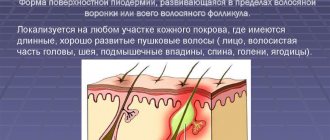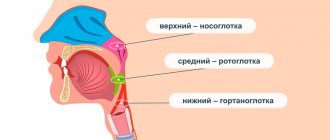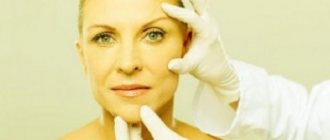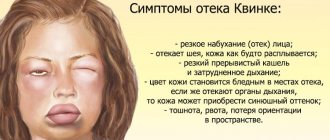Folliculitis is a common form of staph infection. A sign of pathology is pimples or bumps around the hair on the arms or chest.
Folliculitis is a superficial or deep infection by bacteria that enter from the outside through the sebaceous glands or the hair follicle itself. Particularly prone to this type of inflammation are areas of the body where the skin rubs against clothing, such as the neck or back.
Folliculitis - what is it?
The content of the article
Folliculitis is a form of staph infection. Its symptoms are papules and pustules on the arms or chest, formed, for example, after shaving. Folliculitis can be associated with a superficial or deep infection caused by bacteria.
Dermatologists warn: you cannot ignore the skin rashes that often appear after shaving. If left untreated, this can lead to the formation and rupture of a boil.
Materials and methods
Study design
A retrospective multicenter study was conducted that included patients with folliculitis decalvans followed for at least 5 years. The study included patients from 9 Spanish clinics, observed there between 1995 and 2015. The diagnosis of folliculitis decalvans was confirmed histologically in all cases.
The following information was entered into the database: epidemiological (age, gender, race, family history, associated triggers), clinical (age of disease manifestation, lesion size, affected area, complaints, objective symptoms, changes in laboratory parameters), diagnostic (pathohistological results research and culture of discharged pustules from foci of alopecia, as well as discharge from the nose), therapeutic (treatment performed, response to therapy and duration of response, adverse reactions).
As in the study by Vano-Galvan and colleagues, the severity of folliculitis decalvans was assessed based on the maximum diameter of the largest alopecia lesion and was divided into 3 categories: 1 - moderate (up to 2 cm), 2 - moderate (2 - 4.99 cm), 3- heavy (more than 5 cm). Symptom severity was assessed as: asymptomatic, occasional symptoms, daily symptoms.
Response to therapy was assessed as an improvement in symptoms and inflammatory changes greater than 75% in the absence of an increase in alopecia lesions. Efficacy was assessed during scheduled patient visits once every 2-3 months. To assess the economic significance of the disease, monthly costs associated with treatment (cost of medications, private visits to specialists, costs of cosmetic treatment) were assessed.
The patient's quality of life was assessed according to the Dermatology Life Quality Index. Also, the 12-Item Short Form Health Survey, version 1, was used. It allows you to assess the patient’s quality of life according to 12 parameters and determine the degree of psychological well-being (mental health) and functional capabilities (physical health).
Statistical analysis
In descriptive analysis, data are presented as a mean with standard deviation, median, or raw data, depending on whether they have quantitative or common variation and depending on the nature of their distribution. To assess qualitative variation, Student, Mann-Whitney, and Kruskal-Wallis coefficients were used. Differences in qualitative variation were assessed using x2, probability level, and Fisher's test as appropriate. Two multiple logistic regression models were performed with post hoc estimation. The criteria for selecting variation in the models were the following: relevance of the collected scientific literature, clinical criteria of the author, relevance found in the previous analysis of variation. A P coefficient of less than 0.05 was considered statistically significant. SPSS Statistics (version 21, IBM Corp, Armonk, NY) and Stata v14 (StataCorp LP, College Station, TX) programs were used for data analysis.
Hair follicles - definition
What are hair follicles? These are the channels from which hair grows. Hair and fat glands protect the skin from damage (lipid coating) and ensure its gas and heat exchange.
When the follicle is damaged, for example, by aggressive cosmetics or during depilation, microbes enter the base of the follicle and multiply there. The body begins to defend itself against bacteria, and this is how inflammation occurs. Those. folliculitis is an inflammatory reaction to the penetration of pathogenic bacteria or substances dangerous to the body.
Folliculitis
Diagnostics
Diagnosis of the disease is based on laboratory tests.
Diagnosis of folliculitis is based on an external examination and laboratory tests. The rashes associated with folliculitis are quite characteristic, so by studying the appearance of the rash, a diagnosis can be made.
Main characteristics of the rash:
- pustules or papules are located at the mouths of hair follicles;
- rims of hyperemia are observed around the papules;
- the rashes are located chaotically, located close to each other.
In addition, when making a diagnosis, it is necessary to collect an anamnesis, that is, it is necessary to find out how the disease began, what were the preceding and predisposing factors.
To identify the nature of the infectious agent, the following is prescribed:
- Microscopic examination of a smear with Gram staining.
- Bacterial culture of the contents of papules.
- Sometimes a skin biopsy is required.
- Blood test for sugar content. This study is necessary to exclude diabetes mellitus, which can provoke the development of folliculitis.
If folliculitis is suspected, differential diagnosis should be carried out, that is, it is necessary to exclude the presence of diseases that have similar symptoms. This:
- rosacea;
- inflammation of the follicles of a non-infectious nature;
- acne vulgaris;
- toxidermy of various origins;
- Follicular keratosis;
- Kirle disease;
- follicular form of lichen planus, etc.
To make a correct diagnosis, the doctor examines the hair follicle and determines the pathogen that caused the inflammation. Research is also being conducted to identify concomitant diseases that may contribute to the infectious process.
Dermatoscopy, bacteriological culture, fungal tests, PCR diagnostics, blood tests and other studies can help make the correct diagnosis.
At the first signs of dermatological diseases, you should consult a dermatologist. The diagnosis is usually made by external examination, history taking and laboratory tests.
External manifestations in the form of pustules and pustules are a characteristic diagnostic marker and make it easy to identify folliculitis.
It is very important to establish the type of infection that led to the formation of folliculitis. To do this, the contents of the pustules are collected and bacteriological culture and microscopic analysis of the samples taken is carried out.
In order to exclude such serious diseases as gonorrhea and syphilis, it is necessary to carry out PCR diagnostics, which is based on studying the DNA of the pathogenic microorganism.
Additionally, the doctor may prescribe dermatoscopy, with which you can study in more detail the extent of damage to the hair follicle.
A blood glucose test is also a mandatory test, since folliculitis is often found in diabetic patients. In some situations, an immunogram is required if there is a suspicion of reduced immunity.
All diagnostic procedures allow us to differentiate folliculitis from streptococcal impetigo, drug-induced toxicoderma, lichen, acne, follicular keratosis and miliaria.
Diagnosis of folliculitis is carried out by a dermatologist, who examines the skin and then prescribes additional tests:
- Blood analysis.
- Sowing the contents of pustular formations.
- Gram smear analysis.
- Skin biopsy.
go to top
Diagnosis of folliculitis using dermatoscopy
Diagnostic measures for suspected folliculitis are aimed at examining the condition of the hair follicle; determination of the pathogen that caused the inflammation; exclusion of a specific etiology of the disease (syphilis, gonorrhea); identification of concomitant diseases that favor the development of the infectious process.
During a consultation with a dermatologist, the rash is examined and dermatoscopy is carried out, which helps the doctor determine the depth of damage to the follicle. The discharged pustules are collected for microscopy and bacteriological culture, testing for fungi and Treponema pallidum.
To exclude gonorrhea and syphilis, PCR diagnostics and RPR tests are performed. If necessary, the patient is prescribed an immunogram, blood sugar test and other examinations.
During diagnosis, folliculitis is differentiated from ostiofolliculitis, phrynoderma, Hoffmann's perifolliculitis, furunculosis, nodular cystic acne, streptococcal impetigo, Zhiber's pink lichen, and drug-induced toxicoderma.
Folliculitis - causes
Folliculitis happens:
- Non-infectious. In this case, acne is mainly caused by various substances. For example, people who use corticosteroids and corticotropin in ointment form are at risk for inflammatory skin rashes. Non-infectious folliculitis may also involve radiation inflammation caused by sun exposure.
- Infectious. Caused by bacteria - purulent streptococcus and Staphylococcus aureus. Often found on mucous membranes or skin. These bacteria attack the body when immunity is low. Another cause of infectious folliculitis is infection, for example, from contaminated water (pool, spa, hot tub). Also causing folliculitis: herpes virus, parasites and dermatophytes.
There are factors that increase the risk of developing folliculitis:
- depilation/shaving;
- skin injury from clothing, especially in the neck and back;
- cosmetics used: especially those with a high content of fragrances and dyes.
Navigation
- Types of folliculitis
The main causative agents of folliculitis are Staphylococcus aureus and Staphylococcus epidermidis. Also, this disease can be provoked by some viruses and fungi, gram-negative bacteria Ipseudomonas.
Skin folliculitis is viral in nature. That is, if you share towels and hygiene items with a person who suffers from folliculitis, you can become infected. As a rule, for the development of folliculitis, simply the presence of staphylococcus or another pathogenic virus is not enough; predisposing exogenous or endogenous factors are usually “added” to it.
In particular, such endogenous factors include:
- some thyroid diseases;
- hyperandrogenism;
- vegetative-vascular dystonia;
- severe chronic diseases and oncology;
- disorders of the endocrine or nervous system;
- hyperglycemia, diabetes mellitus;
- a significant lack of protein in the body, as well as vitamins A and C;
- long-term use of certain medications;
- decreased CD4 immunity (with AIDS).
The following exogenous (that is, external) factors can also cause folliculitis:
- various skin injuries (when the surface is combed, scratched, thermally injured);
- ignoring recommendations after cosmetic procedures;
- poor or improper baby skin care;
- ignoring and non-compliance with hygiene rules, constant severe contamination of the skin at work;
- hair removal using tweezers.
In the initial stage, redness of the skin around the inflamed follicles is observed, and some pain is felt when touched. That is, pustules begin to appear on the skin around the hair.
If a person does not treat the inflammation and does not treat it, the process progresses, which leads to the formation of an infiltrate. The skin around the inflamed follicle becomes yellowish (accumulation of pus) and takes on the shape of a ball or cone. If you remove the top of the pustule and the pus underneath, a red area will appear. The number of folliculitis can vary from a few to a huge number, affecting large areas of the skin.
Folliculitis - symptoms
Inflammation of the hair follicle occurs in the form of superficial pustules or inflammatory nodules surrounding the hair. The affected hair can be easily removed, however, the changes can quickly recur. In areas where hair follicles are located deep in the skin, such as the chin area, inflammation can be chronic.
If the diameter of the change exceeds the size of the cherry, we are dealing with a boil. It has the form of a sharply defined, sensitive inflammatory nodule. Most often, boils form on the neck, chest, face and buttocks. Over time, the boil turns into pustules with a diameter of 5-30 mm with characteristic focal necrosis in the central part. This area then separates from the rest of the lesion as a plug of pus. The boil may be periodic.
Furuncle
Boils that form groups are called furunculosis. They spread into the subcutaneous tissue, which causes injury to deeper tissues. After furunculosis, a large scar remains.
Cluster boils occur mainly in men, mainly in the neck area. Their presence may be accompanied by fever and severe exhaustion. They are also more common in people with diabetes, cachexia, and older adults.
results
The study included 60 patients (37 men (61.7%) and 23 women (38.3%)). The median age was 40 years (range 23 to 83 years). 58 patients were white (96.6%), 1 patient was Hispanic (1.6%), and 1 patient was African American (1.6%). Among the associated diseases were observed: hypercholesterolemia - 8 patients (13.3%), arterial hypertension - 7 patients (11%), hay fever - 3 patients (5%), obesity - 2 patients (3.3%), non-Hodgkin's lymphoma in 1 patient (1.6% ). There were no associated diseases observed in 39 patients (65%). Concomitant skin diseases were found in 29 patients (48%): androgenetic alopecia in 14 patients (23.3%); atopic dermatitis in 4 patients (6.6%); seborrheic dermatitis in 2 patients (3.3%); psoriasis - in 2 patients (3.3%); hyperhidrosis, alopecia areata, interstitial granulomatous dermatitis, hidradenitis suppurativa, basal cell skin cancer, vitiligo and acne each in 1 patient (1.6%).
A family history of folliculitis decalvans was observed in 4 men (2 pairs of brothers). In 6 patients (10%), the onset of the disease was associated with a stressful situation, in 5 patients (8.3%) - with local trauma. The average age of manifestation of the disease was 32 years (from 10 to 75 years), this figure was higher in women (37 years versus 30 years in men). Clinically, 14 patients (23.3%) had grade 1 folliculitis decalvans, 24 patients (40%) had grade 2 folliculitis decalvans, and 22 patients (36.6%) had grade 3 folliculitis decalvans. The most frequently affected area of the scalp was the vertex (in 33 patients, 55%), followed by the parietal area (in 9 patients, 15%), while in 18 patients (30%) more than 2 lesions were found.
42 patients (70%) complained of itching; trichodynia bothered 28 patients (46.6%). Pustules and crusts were found in 42 patients (70%), seborrhea in 23 (38.3%), papules on the face in 2 patients (3.3%), “tufted hair” in 51 (85%), erythema in 44 (73.3%), perifollicular hyperkeratosis - in 34 patients (56.6%). the severity of subjective symptoms was assessed in 55 patients out of 60 (91.6%), 6 patients (11%) had no complaints, 34 (61.8%) noted that symptoms appeared sometimes, and in 15 (27.2%) symptoms occurred daily. Only 8 patients (13.3%) had changes in laboratory parameters: hypercholesterolemia - in 5 patients, disorders such as thalassemia minor, iron deficiency anemia and antithyroid antibodies - in 1 patient each. After multivariate analysis, the onset of the disease before 25 years of age was recognized as a separate independent factor associated with severe disease (grade 3) (odds ratio, 7.33; 95% confidence interval, 1.5-35.0; P = .01).
Other factors also included in the analysis included the presence of tufted hair, androgenetic alopecia, trichodynia, and pruritus. Microbiological examination of discharged pustules from areas of alopecia was performed in 32 patients (53.3%). S aureus was isolated in 23 patients (72%), Staphylococcus epidermidis - in 1 patient (3%). Cultures were negative in 8 patients (25%). Culture of nasal discharge was performed in 10 patients (16.6%). S aureus was detected in 4 patients (40%), while the remaining patients were culture negative (60%).
The most frequently used drugs were the following: topical corticosteroids in 48 patients (80%); topical antibiotics - in 37 (61.6%); doxycycline/minocycline - in 36 (60%); intralesional administration of GCS - in 25 (41.6%); rifampicin and clindamycin - in 21 (35%); systemic isotretinoin - in 15 (25%); photodynamic therapy - in 8 (13.3%); systemic corticosteroids - in 5 (8.3%); azithromycin and dapsone - in 4 (6.6%); topical tacrolimus - in 3 (5%); hydroxychloroquine and minoxidil - in 2 (3.3%); and finasteride, cyclosporine, acitretin, trimethoprim-sulfomethaxazole, ciprofloxacin, fusidic acid, and rifampicin in 1 patient each (1.6%).
Side effects were assessed in 25 of 60 patients (41.6%) and were observed in 9 of them (36%). Epigastric pain, diarrhea and headache were associated with taking tetracyclines in 4 patients, hypercholesterolemia, arthralgia, nasal bleeding were observed when taking isotretinoin in 3 patients, an increase in the area of alopecia and local pain when using photodynamic therapy in 2 patients.
After performing multivariate analysis, we did not find statistically significant prognostic factors (onset before 25 years of age, presence of tufted hair, androgenetic alopecia, trichodynia, pruritus, treatment with rifampicin and clindamycin versus doxycycline and isotretinoin) that could predict a better response to therapy .
Monthly costs associated with folliculitis decalvans were studied in a subgroup of 25 patients (41.6%). The median monthly cash costs for patients with moderate to moderately severe disease was 20 euros (range 5 to 25 euros), while for patients with severe disease this amount was close to 80 euros (range 27.5 to 170 euros) with statistically significant difference (P = .004).
Results obtained from the Dermatology Life Quality Index showed that almost 25% of patients experience moderate or severe deterioration in quality of life. After collecting data from the 12-Item Short Form Health Survey, version 1, they were analyzed and categorized according to gender. At the same time, it was found that the violation of the psychological state in women is much more pronounced than in men, with a statistically significant difference. At the same time, a more pronounced decrease in the psychological and physical components was observed in the older group of patients.
Folliculitis - treatment
Antibiotics are used to treat folliculitis (locally - ointments or systemically - orally). In addition, the skin in the area of the boil and above the inflammation itself should be frequently disinfected and periodically moist warming compresses should be applied to it to promote spontaneous emptying of the lesion. However, the boil should not be squeezed or punctured, as this can cause the infection to spread, including blood poisoning.
ONLINE REGISTRATION at the DIANA clinic
You can sign up by calling the toll-free phone number 8-800-707-15-60 or filling out the contact form. In this case, we will contact you ourselves.
How to diagnose
To make a diagnosis, the specialist prescribes:
- Microscopy with bacteriological examination of discharge;
- Dermatoscopy;
- PCR diagnostics;
- Testing for Treponema pallidum and mycotic infections.
Treatment
Therapy includes:
- Antifungal drugs;
- Local antibiotics;
- Solutions of aniline dyes that need to be used to treat lesions;
- UV therapy.
Application of traditional medicine
Treatment with unconventional methods has long established itself among the people. These are truly effective remedies against many diseases, including folliculitis.
But you need to be careful when using traditional recipes - they can cause allergic reactions. Before use, it is better to consult a doctor. Let's look at some of them:
- Tea tree oil is one of the most popular and effective remedies against this disease. Has an antiseptic and healing effect. Apply 3-4 times a day, smearing onto affected areas.
- Calendula decoction has an anti-inflammatory, antimicrobial effect and accelerates healing. To prepare such a decoction, you will need to pour 5 grams of calendula into 250 ml of boiling water and leave for 20-30 minutes, then strain. Apply 3-4 times a day, moistening the affected areas.
- Chamomile decoction can be prepared by pouring 20 grams of dry chamomile with a glass of boiling water, letting it brew for about half an hour and straining. Moisten the inflammation every 3-4 hours a day.
- Thistle , which contains many useful active substances, copes well with wound healing. For folliculitis, crushed fresh thistle is applied to the inflamed areas and covered with a sterile gauze bandage.
- A multi-component product made from viburnum berries (200g), rose hips (200g), dried nettles (10g) and crushed walnut shells (10g). You will need 3 tbsp. Pour 300 ml of boiling water over the resulting dry mixture and cook over low heat for about 10 minutes. Then pour into a container, close the lid and leave for 24 hours, then strain. Mix 50 grams of the resulting infusion with 1 tbsp. honey and 50 grams of cottage cheese. Apply the mixture to the ulcers, leaving for 20 minutes. This remedy is used only for superficial folliculitis.








